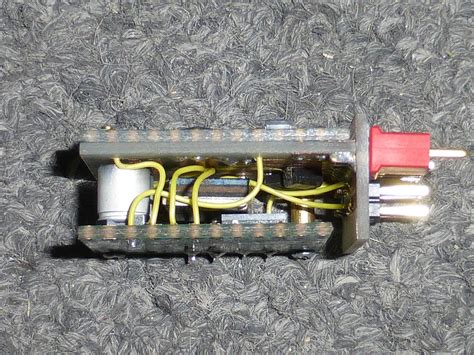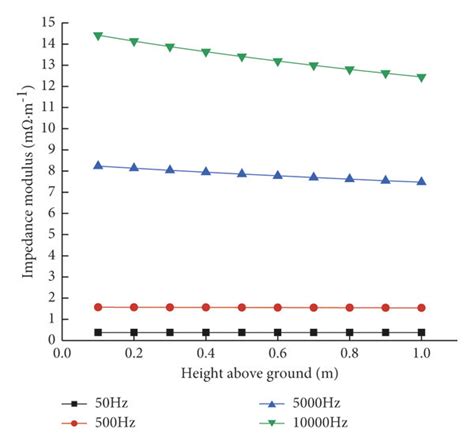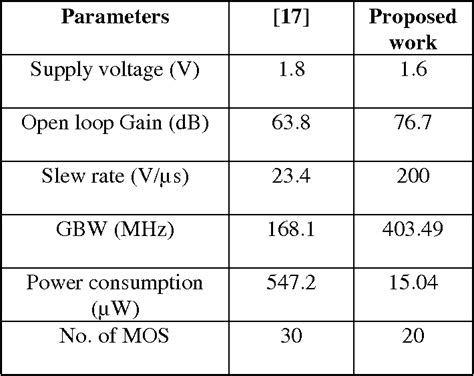What is Impedance?
Impedance is a measure of the opposition that a circuit presents to the flow of alternating current (AC) or any time-varying current. It is a complex quantity that consists of both resistance and reactance. In the context of power rails, impedance refers to the opposition that the power distribution network presents to the flow of current from the power source to the load.
The Importance of Low-Impedance Power Rails
Low-impedance power rails are essential for several reasons:
- Minimizing voltage drop
- Reducing noise and electromagnetic interference (EMI)
- Improving transient response
- Ensuring signal integrity
Let’s explore each of these points in more detail.
Minimizing Voltage Drop
One of the primary reasons for keeping power rail impedance low is to minimize voltage drop. When current flows through a power rail, it encounters resistance, which causes a voltage drop across the rail. This voltage drop can be calculated using Ohm’s law:
V = I × R
Where:
– V is the voltage drop
– I is the current flowing through the rail
– R is the resistance of the rail
If the power rail impedance is high, the voltage drop will be significant, resulting in a lower voltage at the load than intended. This can cause various issues, such as:
- Reduced performance of the connected components
- Increased power dissipation and heat generation
- Potential malfunction or failure of the components
To illustrate this concept, let’s consider an example. Suppose we have a power rail with a resistance of 0.1 Ω and a current of 1 A flowing through it. The voltage drop across the rail can be calculated as follows:
V = 1 A × 0.1 Ω = 0.1 V
If the nominal supply voltage is 3.3 V, the actual voltage at the load will be:
V_load = 3.3 V – 0.1 V = 3.2 V
This voltage drop may not seem significant, but it can have a notable impact on the performance and reliability of the connected components, especially in low-voltage systems.
Reducing Noise and Electromagnetic Interference (EMI)
Another important reason for maintaining low power rail impedance is to reduce noise and electromagnetic interference (EMI). High-impedance power rails are more susceptible to noise coupling from various sources, such as:
- Switching noise from digital circuits
- Crosstalk from adjacent signal traces
- External EMI sources
When noise couples onto a high-impedance power rail, it can cause voltage fluctuations that can propagate throughout the circuit, affecting the performance and reliability of the connected components. These voltage fluctuations can lead to:
- Signal integrity issues
- Increased jitter in clock signals
- False triggering of logic circuits
- Reduced signal-to-noise ratio (SNR) in analog circuits
To minimize noise coupling, it is essential to keep the power rail impedance as low as possible. This can be achieved through various techniques, such as:
- Using wide and thick copper traces for power rails
- Placing power and ground planes close together
- Using decoupling capacitors to provide a low-impedance path for high-frequency noise
- Implementing proper grounding and shielding techniques
Improving Transient Response
Transient response refers to the ability of a power supply to respond quickly to sudden changes in load current demand. When a load switches from a low-current state to a high-current state (or vice versa), it causes a sudden change in the current drawn from the power supply. If the power rail impedance is high, this sudden change in current will result in a voltage drop across the rail, which can cause the supply voltage to deviate from its nominal value temporarily.
This voltage deviation, known as a transient voltage drop, can cause various issues, such as:
- Glitches in digital circuits
- Reduced dynamic range in analog circuits
- Potential malfunction or failure of the connected components
To improve the transient response of a power supply, it is crucial to keep the power rail impedance low. This allows the power supply to respond quickly to changes in load current demand without causing significant voltage deviations. Low-impedance power rails also help to minimize the size and duration of transient voltage drops, ensuring that the supply voltage remains within acceptable limits.
Ensuring Signal Integrity
Signal integrity is a critical aspect of electronic design, particularly in high-speed digital systems. It refers to the ability of a signal to maintain its intended shape and timing as it propagates through a circuit. High-impedance power rails can have a detrimental effect on signal integrity in several ways:
-
Power supply noise: As discussed earlier, high-impedance power rails are more susceptible to noise coupling, which can cause voltage fluctuations on the power supply. These voltage fluctuations can modulate the signals traversing the circuit, leading to signal integrity issues such as jitter, eye closure, and bit errors.
-
Ground bounce: Ground bounce is a phenomenon that occurs when a large number of digital circuits switch simultaneously, causing a sudden increase in the current drawn from the ground rail. If the ground rail impedance is high, this sudden increase in current will result in a voltage spike on the ground rail, which can couple onto nearby signal traces and cause signal integrity issues.
-
Voltage reference instability: Many analog circuits, such as analog-to-digital converters (ADCs) and digital-to-analog converters (DACs), rely on stable voltage references for accurate operation. If the power rail impedance is high, the voltage reference may be affected by noise and transient voltage drops, leading to inaccuracies in the analog signal processing.
To ensure signal integrity, it is essential to keep the power rail impedance low. This helps to minimize power supply noise, ground bounce, and voltage reference instability, allowing signals to propagate through the circuit with minimal distortion and timing errors.

Techniques for Achieving Low-Impedance Power Rails
There are several techniques that designers can use to achieve low-impedance power rails in their circuits. Some of the most common techniques include:
-
Using wide and thick copper traces: Increasing the width and thickness of the copper traces used for power rails helps to reduce their resistance and inductance, thus lowering their impedance. This is particularly important for high-current applications, where the voltage drop across the power rails can be significant.
-
Placing power and ground planes close together: In multilayer PCBs, placing the power and ground planes close together helps to minimize the loop area between them, reducing the inductance of the power distribution network. This, in turn, helps to lower the impedance of the power rails.
-
Using decoupling capacitors: Decoupling capacitors are placed between the power and ground rails to provide a low-impedance path for high-frequency noise. They help to shunt noise away from the power rails, reducing the noise coupling onto sensitive circuits. Decoupling capacitors also help to improve the transient response of the power supply by providing a local energy storage reservoir.
-
Implementing proper grounding and shielding techniques: Proper grounding and shielding techniques are essential for minimizing noise coupling and ensuring signal integrity. This includes using a solid ground plane, properly connecting the ground planes of different PCB layers, and using shielding techniques such as guard rings and Faraday cages.
-
Using power integrity simulation tools: Power integrity simulation tools, such as PSpice and SIwave, allow designers to analyze the impedance of their power distribution networks and identify potential issues before the circuit is fabricated. These tools can help designers optimize the placement and sizing of decoupling capacitors, as well as the layout of the power and ground planes.

Real-World Examples
To illustrate the importance of low-impedance power rails in real-world applications, let’s consider a few examples:
-
High-speed digital systems: In high-speed digital systems, such as microprocessors and field-programmable gate arrays (FPGAs), the power rail impedance must be kept extremely low to ensure proper operation. These devices often have hundreds or thousands of digital circuits switching simultaneously, which can cause significant noise and transient voltage drops on the power rails. To mitigate these issues, designers use a combination of techniques, such as using multiple power and ground planes, placing decoupling capacitors close to the devices, and using low-impedance packaging technologies.
-
Precision analog circuits: In precision analog circuits, such as data acquisition systems and medical instrumentation, the power rail impedance must be kept low to ensure the accuracy and stability of the analog signals. These circuits often rely on stable voltage references and low-noise power supplies for proper operation. High-impedance power rails can introduce noise and voltage fluctuations that can degrade the performance of these circuits, leading to inaccurate measurements and potentially dangerous outcomes.
-
Automotive electronics: In automotive electronics, the power rail impedance must be kept low to ensure the reliability and safety of the vehicle. Automotive environments are harsh, with wide temperature ranges, vibration, and exposure to moisture and contaminants. High-impedance power rails can be more susceptible to failure under these conditions, potentially leading to malfunctions in critical systems such as braking and steering. To mitigate these risks, automotive electronics designers use robust power distribution networks with low-impedance power rails and extensive testing to ensure the reliability of their circuits.

FAQs
-
What is the difference between resistance and impedance?
Resistance is a measure of the opposition to the flow of direct current (DC) in a circuit, while impedance is a measure of the opposition to the flow of alternating current (AC) or any time-varying current. Impedance is a complex quantity that consists of both resistance and reactance. -
How does increasing the width and thickness of copper traces help to reduce power rail impedance?
Increasing the width and thickness of copper traces helps to reduce their resistance and inductance, thus lowering their impedance. This is because the resistance of a conductor is inversely proportional to its cross-sectional area, while the inductance is proportional to the loop area between the power and ground conductors. -
What is the role of decoupling capacitors in reducing power rail impedance?
Decoupling capacitors provide a low-impedance path for high-frequency noise, helping to shunt noise away from the power rails and reduce noise coupling onto sensitive circuits. They also help to improve the transient response of the power supply by providing a local energy storage reservoir. -
Why is it important to keep power rail impedance low in high-speed digital systems?
In high-speed digital systems, the power rail impedance must be kept extremely low to ensure proper operation. These devices often have hundreds or thousands of digital circuits switching simultaneously, which can cause significant noise and transient voltage drops on the power rails. Low-impedance power rails help to mitigate these issues, ensuring the reliable operation of the digital circuits. -
How can power integrity simulation tools help in achieving low-impedance power rails?
Power integrity simulation tools allow designers to analyze the impedance of their power distribution networks and identify potential issues before the circuit is fabricated. These tools can help designers optimize the placement and sizing of decoupling capacitors, as well as the layout of the power and ground planes, ultimately helping to achieve low-impedance power rails.
In conclusion, maintaining low-impedance power rails is crucial for ensuring the proper functioning, reliability, and signal integrity of electronic circuits. By understanding the importance of low-impedance power rails and implementing appropriate design techniques, engineers can create robust and reliable electronic systems that perform optimally in various applications, from high-speed digital devices to precision analog circuits and automotive electronics.

No responses yet